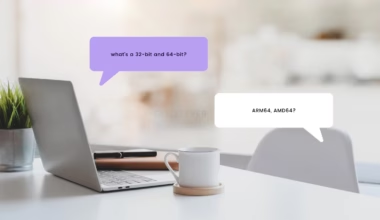High-quality images help brands attract target audiences, convey the right messages and ideas, boost conversion rates, and encourage customers to purchase. Vector graphics, in turn, also add appeal, visual clarity, and personality to marketing and business projects. Additionally, they are easy to edit and work with. In this article, you’ll get to know all the essential insights about vector illustrations. Keep reading!
Raster graphics vs. vector graphics
There are two types of graphics: raster and vector. Unlike raster files that are made up of pixels, vector images are based on mathematical formulas that define lines, points, curves, and other geometric shapes. Mathematical formulas get automatically recalculated when the vector is edited or rescaled.
Vectors are technically 2D, but layering different elements and using textures can give an image a 3D appearance. The most common formats for rasters are JPG, JPEG, PNG, and GIF. Regarding vector graphics, it’s SVG, AI, EPS, CDR, and PDF.
What can you use vector graphics for?
The most popular applications are marketing, merchandise, animation, print design, embroidery, and event promotion. You can use vector graphic designs to create logos, clothing, billboard, web posters, typography, and other materials. To download royalty-free HD stock vector images for your online and offline projects, visit https://depositphotos.com/stock-vectors.html.
6 benefits of using vector graphics as web illustrations
Vector graphics are widely used for creating appealing digital projects and web designs because of the many advantages creators get: from editing to generally using these images. Here is a quick list of vector graphic advantages.
- They have an “infinite” resolution
Vector images never lose their quality, even if you zoom in on them significantly. That’s another difference from pixel-based graphics that heavily depend on the resolution of an image. Since vector illustrations depend on coordinates and mathematical formulas, you can enlarge a curve, line, or shape to whatever size you need and will always see them in HD quality; there will be no pixelation or blur.
- They are scalable
Vectors are suitable for responsive web designs, digital projects, and prints. They can be enlarged or compressed and look just as sharp. You don’t need to enhance vector quality using additional software; the mathematical formula adapts to the file size and correctly displays all image elements.
- They are lightweight
In comparison to pixel-based files, vector files store less information. They only contain mathematical data of coordinates, shapes, lines, dots, and color information. This means that you can have a highly complex vector drawing with different texts, shapes, and colors and still have a lightweight file. Even if you increase a vector image’s dimensions, it will still be lightweight. This feature is essential for increasing a website’s loading speed.
- They are easily reusable
Another great thing about vector graphics is their versatility. Using vector-based software, you can draw shapes, create and manipulate text by changing their scale & tilt, add filters & textures, change colors, duplicate or delete image elements, and apply other extensions that let you transform pictures even more. Moreover, you can easily convert vectors into rasters.
- They can be animated
It’s easy to make basic, frame-by-frame animations with vector illustrations. You can benefit from this feature by moving and transforming vector objects, changing their color, bending their strokes, and applying other parameters. What’s more, using vector-based software, you can create a GIF.
- They can be edited with code
Depending on the file format, a vector image can be written in code or programmed. For instance, an SVG vector format is based on XML (Extensible Markup Language). Therefore, you can easily make changes to the visual by editing the source code.
How to design vector graphics in Adobe Illustrator
Adobe Illustrator is a professional vector-based software where you can easily vectorize an image without losing quality. Here are step-by-step instructions on how to do so.
- Choose an image you want to convert to a vector. You can use a fully colored raster picture or draw a sketch that you will later turn into a vector image.
- Select an Image Trace Preset. This is a special tool that lets you vectorize images. Choose the option that most closely resembles the type of image you’re converting (High Fidelity Photo or Low Fidelity Photo; 3 Colors, 6 Colors, or 16 Colors; Shades of Grey, Black & White Logo, Sketched Art, Silhouettes, Line Art, or Technical Drawing).
- Fine-tune your traced image. Open the Image Trace panel from the Window menu → choose Mode to switch between color, grayscale, and black and white.
- Ungroup colors. Click on the Expand button at the top of the window; it will allow you to view the composite shapes. Each of them is outlined in blue. Right-click the image and select Ungroup in the menu. It will allow you to separate your color shapes into individual parts.
- Save your vector image. Go to File → Save as… and choose the file format suitable for your project or further application.
Conclusion
There is a lot of freedom in using vector images, from marketing to typography. Wherever you utilize them, vector illustrations are a great tool to boost engagement on your website or any other design project. They are lightweight, scalable, and easily reusable. Browse HD vectors on stock content marketplaces to download licensed graphics for commercial purposes.


